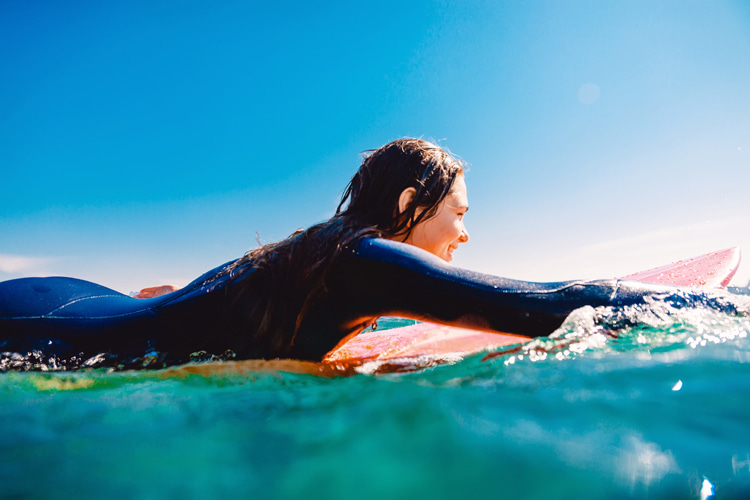Swimmer's shoulder is a musculoskeletal condition that affects swimmers and surfers of all ages.
Did you know that the shoulder is the most regularly injured joint in surfing and swimming?
The reason is that surfers and swimmers depend on it to swim, paddle around the ocean, and catch waves.
As a result, shoulders suffer two main types of injuries: rotator cuff strain and multidirectional instability.
Interestingly, the shoulder has the broadest range of motion of any joint in the human body.
But to allow for this constant movement, it is kept in place primarily by tendons instead of the stronger but less flexible ligaments found in other major joints.
The most vulnerable structure in the shoulder is the rotator cuff, a series of four muscles that prevent the shoulder from popping out of its shallow socket in the scapula or shoulder bone.
These four muscles originate on the scapula.
Their tendons come together to form a fibrous capsule - or "cuff" - that surrounds and stabilizes the golf ball-like humeral head while allowing the arm to rotate freely.
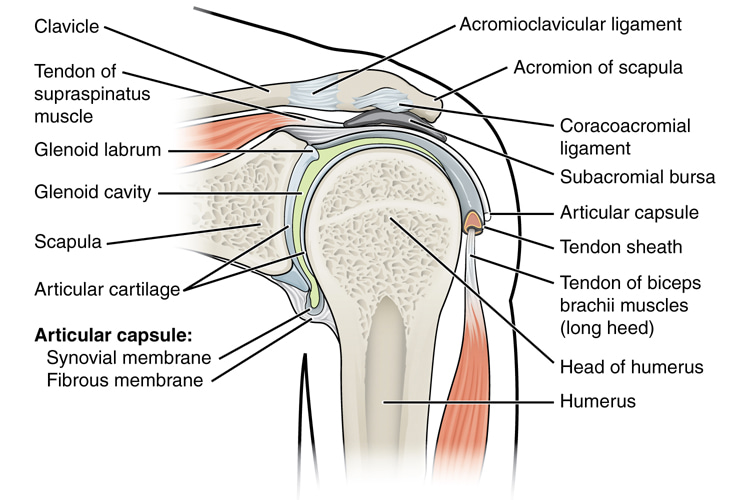
The Rotator Cuff Strain
The condition commonly known as swimmer's shoulder - or surfer's shoulder - occurs when the tough yet thin rotator cuff is overstretched or torn.
The painful event can happen when a surfer gets pounded by a closeout wave or wipes out badly.
However, in most cases, it is a consequence of the normal wear and tear associated with constant paddling.
On average, surfers spend half of the time paddling, resulting in hundreds, if not thousands of strokes per session, several duck dives, and plenty of take-offs.
The area of the rotator cuff most prone to injury is the supraspinatus muscle tendon.
This small muscle of the upper back can impinge as it slides through a narrow gap between the acromioclavicular joint and the humeral head.
This bony gap is narrowest when the arm is overhead, for example, when paddling a surfboard.
And that is the reason why surfers often suffer from shoulder pain during or after a session.
The impingement of the supraspinatus tendon leads to inflammation and tendinitis.
The fatter and swollen tendon enters a vicious cycle and gets more and more irritated and chafed as it attempts to squeeze under the acromion.
If a surfer continues to pressure the area despite feeling pain, the inflamed tendon will start to fray and eventually break down, causing a tear through the rotator cuff.
The most common symptoms of a rotator cuff injury are pain in the top and front of the shoulder and restricted arm movement.
There are simple things a surfer - or swimmer - can do to relieve the pain and recover.
Give your shoulder a rest for a couple of weeks, and take some ibuprofen. If it doesn't heal, or if you still feel acute pain, visit a doctor.
Remember that small rotator cuff tears can be treated with physical therapy, but a larger tear will definitely require surgery.
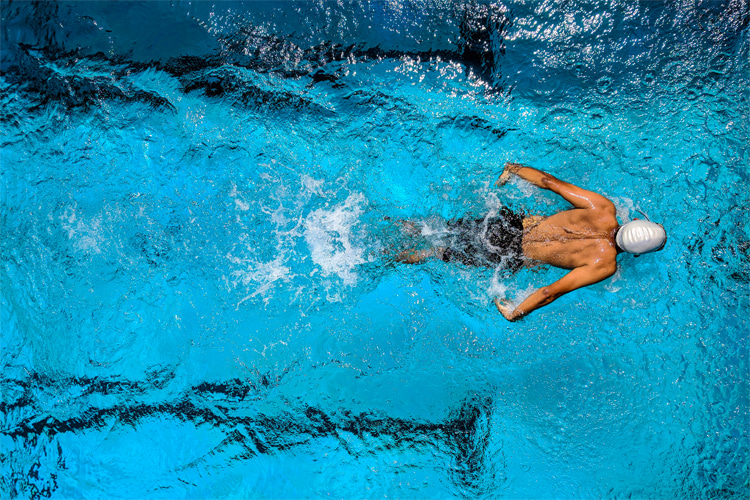
The Multidirectional Instability
The gradual stretching out of the rotator cuff can also result in another chronic shoulder condition.
Subluxation - or multidirectional instability - is the laxity of the shoulder joint, resulting in dislocation or partial dislocation.
In this particular case, the shoulder pops out of the socket and then pops back in.
The problem can be overcome with exercises that strengthen the muscles that form the cuff to help tighten up and stabilize the joint.
Physical Therapy Exercises
The best way to prevent shoulder injury is to stretch your shoulders several times per week to keep them strong and loose.
Surfers over 40 should perform regular strengthening exercises and learn the difference between normal muscle soreness and joint issues.
Those who have suffered prior dislocations, instability, pain shooting down the arm or into the neck, limited range of motion, or who have had prior surgery may need to be evaluated by a sports physician.
The following exercises can be found in "Surf Survival: The Surfer's Health Handbook," a book by Andrew Nathanson, Clayton Everline, and Mark Renneker.
They will help you prevent and rehabilitate shoulder and biceps overuse injuries.
Isometric Shoulder Rotations
If shoulder pain is severe, start with this gentle exercise.
Standing near a tree - or door frame - with your elbow bent 90 degrees and the back of your wrist pressing against the tree, try to press your hand outward into the tree.
Hold for five seconds.
Alternate by trying to press the palm of your hand into the tree, holding that for five seconds.
Do two sets of 15 repetitions every other day.
Isokinetic Shoulder Rotations
Attach an elastic cord to a fixed object, like a doorknob, at waist height.
Stand a few feet away, right shoulder toward the door, and grasp the elastic with your right hand.
With your elbow bent at 90 degrees and held against your side, rotate your lower arm 180 degrees toward your left hip, pulling the elastic cord taught.
This moves your shoulder in internal rotation.
Now turn, facing the opposite direction.
Again, grasp the cord with your right hand, starting at your left hip, and move your shoulder in external rotation 180 degrees.
Do two sets of 15 repetitions every other day.
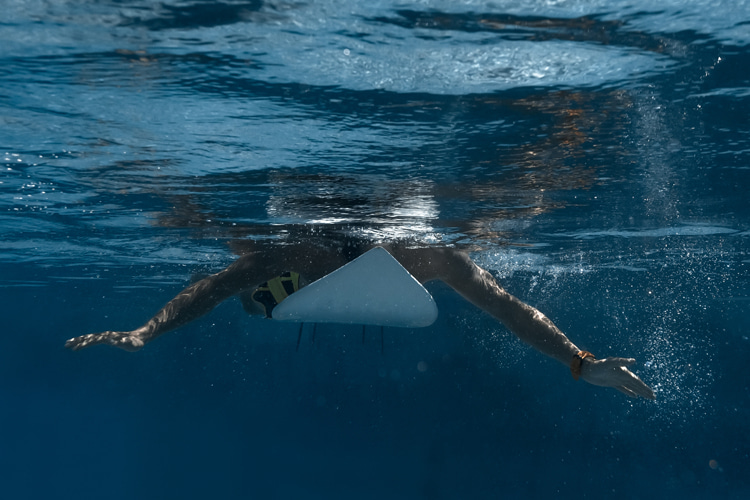
Side-Lying External Rotation
Lie on the floor sideways with your arm flexed 90 degrees at the elbow.
Rotate your upper arm until it is pointed at 45 degrees toward the ceiling while keeping your lower arm next to your body.
Hold for two seconds, and then lower it slowly.
Start this exercise with no weight. As you get stronger, add a light weight.
Do two sets of 15 repetitions every other day.
Horizontal Abduction
Lie on a table or the edge of a bed facedown with one arm hanging down straight to the floor.
Raise your arm out to the side, with your thumb pointed toward the ceiling, until your arm is parallel to the floor.
Hold for two seconds, and then lower it slowly. Start this exercise with no weight.
As you get stronger, add a light weight or a bungee cord for resistance.
Do two sets of 15 repetitions every other day.
Scapular Squeeze
This one is just like the neck rehabilitation sequence.
While sitting or standing, squeeze your shoulder blades down.
Do two sets of 15 repetitions every day.
Thoracic Extension
Just like the neck rehabilitation sequence, contract the shoulder blades back and look up toward the sky several times per day.
Do two sets of 15 repetitions daily.
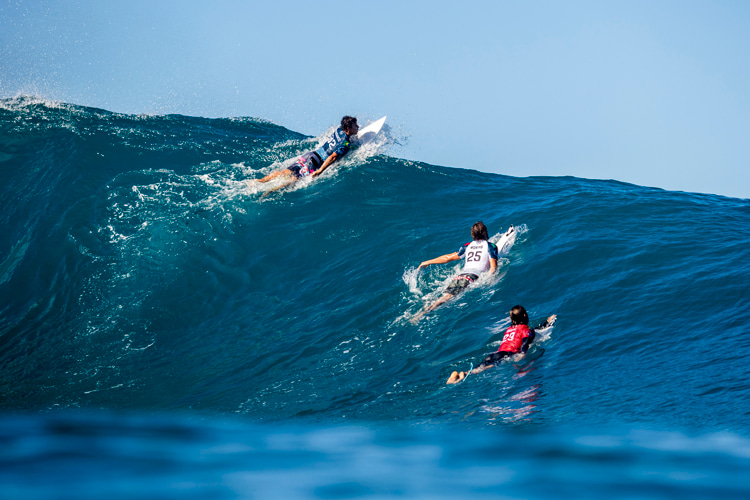
Mid-Trap Exercise
Lie on your stomach with your elbows straight, fingers pointing toward your feet, and thumbs toward the ceiling.
Slowly raise your arms toward the ceiling while squeezing your shoulder blades together. Lower slowly.
Do two sets of 15 repetitions every other day.
Biceps Stretch
Stand up, holding your surfboard with both hands behind your back for 20-30 seconds several times after your surf session.
You should feel a stretch in your biceps muscles.
Biceps Curls
Stand up and hold some kind of weight that does not cause discomfort when lifting. Bring your hand up toward your shoulder.
Do as many as possible every other day, but stop if it becomes painful.
Push-up Plus
Begin on the floor on your hands and knees.
Keep your arms shoulder-width apart and lift your feet off the floor.
Arch your back as high as possible and round your shoulders forward to activate the anterior serratus muscles.
Bend your elbows and lower your body to the floor.
Return to the starting position and arch your back again.
Push-up-type exercises with a balance board promote shoulder stability by training the shoulder muscles on an unstable surface, much like duck-diving a surfboard on the water.
Do as many as possible every other day, but stop if pain develops.
Bibliography and References:
A. Nathanson, C. Everline, and M. Renneker. "Surf Survival: The Surfer's Health Handbook," Skyhorse Publishing, 2011
